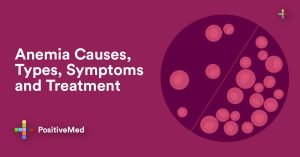
Increase Your Workout Efficiency According To A Features Of Your Body Type
[nextpage title=”…”]
Did you know that regardless of how often or how hard you work out, certain genetic factors will always play a part in determining how your body responds? Depending on your body type -ectomorph, endomorph, or mesomorph-changing the size or shape of your body may be relatively simple or extremely difficult. To maximize the effects of your workout routine, identify your body type and learn which exercises will be most helpful to you.

The Ectomorph
People with this body type can seemingly eat whatever they want whenever they want, without ever gaining an ounce. For some ectomorphs, gaining weight can be a real challenge. Typical physical characteristics of this body type include low levels of body fat, thin limbs, chest, and abdominal areas, and narrow shoulders and hips. They also commonly have thin faces and high foreheads.
When it comes to training, ectomorphs should focus on a few key tips. First, split-training that engages 1-2 body parts and muscle groups at a time is recommended once per week. The specific workout plan should be changed about once a month, with plenty of rest between routines. The key is to force the body to work hard for a short amount of time, using heavy but simple movements aimed at hitting fibers deep within the muscles.
For best results, the ectomorph should perform 6-8 sets of 5-10 reps per exercise, taking the time to rest for 60 seconds between sets and 5 minutes between each body part. If muscle growth and strength are slow, the ectomorph can attempt to shock their body by performing 10 sets of 10 reps for each exercise aimed at an individual body part. This shocking technique should be used sparingly, however, and no more than once every 8 weeks to avoid overtraining that can lead to slower muscle growth.
The bottom line: Due to having high metabolic rates, ectomorphs require at least 8 hours of sleep per night and more rest days between workouts. Avoid excessive amounts of aerobic exercises, as this, can actually slow the rate of progress. 3 aerobic routines per week are sufficient, and the best types include brisk walking, stationary biking, and treadmill workouts.
The Mesomorph
The mesomorph body type is right in between the thin ectomorphs and the rounder endomorphs. Characterized by having broad shoulders and a narrow waist, it is generally the preferred of the 3 body types. Other physical characteristics of mesomorphs include strong thighs and forearms, long torsos and full chests, and a proportionate shoulder-to-waist ratio. Generally, they have very little body fat and have the highest potential for bodybuilding of all the body types.
RELATED ARTICLE: Find The Right Workout Based On Your Body Type!
An ideal workout routine for a mesomorph should consist of shaping exercises that utilize heavy yet basic movements, alternating between 3-4 weeks of high-intensity training and several weeks of lower impact workouts. Keeping a varied workout routine will both produce great results and prevent the mesomorph from burning out.
[/nextpage] [nextpage title=”…”]
8-12 reps of quick and basic movements with heavy weights followed by shaping techniques will produce obvious results for those who fall under the mesomorph category. Routines focusing on the hamstrings, quads, and calves can be performed in reps as low as 6 and as high as 25 though the mesomorph should be sure to avoid overtraining. The key to seeing results is to constantly change up the intensity with different exercises, sets, reps, weights, and periods of rest. Training days should alternate between light, moderate, and high-intensity workouts.
The bottom line: For best results, cardio exercises should be limited to 3 per week, 20-35 minutes per workout. Mesomorphs are genetically blessed, so it is easy to over-train. Recommended exercises include climbing stairs, treadmill, brisk walking, or stationary biking.
The Endomorph
The most challenging body type of them all, endomorphs are quite literally rounder than the rest. Physical characteristics include narrow shoulders and broad hips, with generous amounts of fat spread across the body, including the upper arms and thighs. Thin ankles and wrists magnify larger areas of the body. Endomorphs typically have slow metabolisms and have difficulty losing weight, though gaining weight is not a problem for most. Accumulated fat also makes muscle gain harder to notice.
Endomorphs require more frequent and intense workouts–specifically aerobic exercises–if weight loss is to be achieved and maintained. For each body part, 3-5 exercises should be learned, and 2-3 should be performed during each workout routine. Make sure to let each body part rest 48 hours before the next workout. Whole body workouts are best during the beginning of training, and split-training exercises can be introduced later in the training. The main goal for endomorphs is to raise their metabolic rate while decreasing their amount of body fat. If this is to be done, every exercise routine should be intense with minimal rest between sets.
The bottom line: The endomorph body type requires the most effort if weight loss is to be achieved. Sets should be minimized to 8 per body part, with no more than 60 seconds of rest between sets. Avoid training with heavy weights and small reps. The target rep range for upper body parts should be around 9-12, and lower body rep ranges should be around 12-25.
Conclusion
The amount of effort required to reach your fitness goals is largely impacted by your specific body type. Ectomorphs will always be more naturally thin than an endomorph, and mesomorphs will always seem to have a muscle-building advantage over the rest of us. However, your body type is not an excuse to stay enslaved by your genetic make-up. Anyone can take their workout routine to the next level if they take the time to learn which forms of exercise are most helpful to their specific body type.
[/nextpage]





